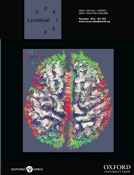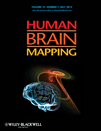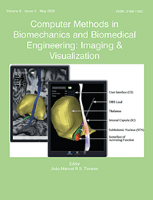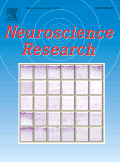
Frontiers in Neuroinformatics
Scope & Guideline
Unveiling Insights into Neural Data and Computational Models
Introduction
Aims and Scopes
- Neuroinformatics and Data Sharing:
The journal emphasizes the importance of neuroinformatics in organizing, analyzing, and sharing neuroscience data, facilitating collaborative research and reproducibility. - Machine Learning Applications:
A core focus is on the application of machine learning techniques to analyze neuroimaging data, EEG signals, and other physiological data to improve diagnosis and treatment of neurological disorders. - Computational Modeling of Brain Functions:
Research on developing computational models that simulate brain functions, neurophysiological processes, and neurodevelopmental dynamics is a significant theme. - Innovative Analysis Tools:
The journal promotes the development of new tools and methodologies for data analysis, including frameworks for EEG, fMRI, and other imaging modalities. - Understanding Neurological Disorders:
A consistent aim is to leverage neuroinformatics to better understand and treat various neurological disorders, including Alzheimer's disease, epilepsy, and schizophrenia.
Trending and Emerging
- Federated Learning and Data Privacy:
Recent publications increasingly focus on federated learning approaches that allow for collaborative analysis of neuroimaging data while preserving patient privacy, reflecting the growing concern for ethical data use in research. - Explainable AI in Neuroscience:
There is a rising emphasis on explainable artificial intelligence (AI) methods that provide insights into the decision-making processes of machine learning models applied to neuroimaging, enhancing interpretability and trust in AI-driven analyses. - Integration of Multi-Omics and Neuroimaging:
Emerging themes include the integration of multi-omics data (genomics, proteomics, etc.) with neuroimaging modalities, aiming to provide a more comprehensive understanding of brain disorders. - Dynamic and Real-Time Data Analysis:
There is a growing interest in methodologies that enable real-time analysis of dynamic brain data, particularly in the context of EEG and neurofeedback applications. - Advanced Neural Network Architectures:
The use of sophisticated neural network architectures, including transformers and graph neural networks, is increasingly common in papers, reflecting the trend towards more powerful and flexible modeling techniques.
Declining or Waning
- Traditional Statistical Methods:
There has been a noticeable decline in the publication of papers relying solely on traditional statistical methods for neuroimaging analysis, as the focus shifts towards more advanced machine learning techniques. - Basic Neuroscience Studies:
Research that solely focuses on basic neuroscience without integrating computational tools or data analysis techniques is becoming less frequent, reflecting a shift towards more applied neuroinformatics. - Single-Modal Imaging Studies:
Studies that focus exclusively on single-modal imaging techniques (e.g., just fMRI or just EEG) are declining, as there is a growing trend towards multimodal approaches that integrate various data sources. - Overly Simplistic Models:
The journal has seen fewer submissions of simplistic computational models that do not adequately reflect the complexity of brain functions and interactions.
Similar Journals

CEREBRAL CORTEX
Pioneering research in cognitive and molecular neuroscience.CEREBRAL CORTEX, published by Oxford University Press Inc, is a premier journal dedicated to advancing the field of neuroscience, specifically focusing on the cellular, molecular, and cognitive aspects of cortical structure and function. With an impressive impact factor that situates it in the top quartile (Q1) of its categories for 2023, this journal holds significant relevance for researchers and professionals interested in the latest discoveries and methodologies in both Cognitive Neuroscience (ranked #31 out of 115) and Cellular and Molecular Neuroscience (ranked #48 out of 97). Operating without an open access model, it ensures rigorous peer review and dissemination of high-quality research from across the globe. Since its inception in 1991, CEREBRAL CORTEX has established itself as a critical platform for educators and inventors, pushing the boundaries of knowledge in understanding brain function and its implications for behavior. Researchers and students alike will find this journal an invaluable resource for both foundational and cutting-edge studies in neuroscience.

RESTORATIVE NEUROLOGY AND NEUROSCIENCE
Driving Discovery: Elevating the Standards of Neurological CareRESTORATIVE NEUROLOGY AND NEUROSCIENCE, published by IOS PRESS, is a premier journal dedicated to advancing the fields of neurology and neuroscience. Since its inception in 1989, this journal has played a crucial role in disseminating cutting-edge research findings and innovative therapeutic approaches that aim to restore neurological function and improve patient outcomes. With a focus on developmental neuroscience and clinical neurology, the journal holds a 2023 Scopus ranking of #129 out of 400 in clinical neurology, and #15 out of 37 in developmental neuroscience, reflecting its significant influence in these domains. Although it operates on a non-open access model, RESTORATIVE NEUROLOGY AND NEUROSCIENCE offers valuable insights for researchers, healthcare professionals, and students seeking to deepen their understanding of neural restoration mechanisms and therapeutic strategies. Located in Amsterdam, Netherlands, the journal continues to foster scholarly dialogue and innovation, contributing to the global advancement of neuroscience and neurology.

HUMAN BRAIN MAPPING
Exploring the intricate pathways of the human brain.HUMAN BRAIN MAPPING, published by Wiley, is a premier journal in the field of neuroscience, devoted to comprehensively advancing understanding of brain structure and function through innovative mapping techniques. With an impressive impact factor and ranked in the Q1 category across multiple relevant disciplines—including Anatomy, Neurology, and Radiology—this journal is recognized as a vital resource for researchers and professionals passionate about the complexities of the human brain. Founded in 1993 and continuously publishing groundbreaking research, HUMAN BRAIN MAPPING is essential for those looking to stay at the forefront of developments in anatomical and neurological research. Though it does not currently offer Open Access options, the journal remains committed to disseminating high-quality research that influences clinical practices and academic inquiry. Its esteemed position within Scopus highlights its significance; charting at the top percentiles across various medical and health fields serves as a testament to the critical contributions made by the authors and researchers involved. As it converges toward 2024, HUMAN BRAIN MAPPING continues to be the go-to platform for publishing pivotal insights into the intricacies of brain mapping methodologies and applications.

Computer Methods in Biomechanics and Biomedical Engineering-Imaging and Visualization
Pioneering Research in Biomechanics and Imaging TechnologiesComputer Methods in Biomechanics and Biomedical Engineering - Imaging and Visualization is a prominent academic journal published by Taylor & Francis Ltd, dedicated to the intersection of computational methods and biomedical engineering. With an ISSN of 2168-1163 and an E-ISSN of 2168-1171, the journal has become a crucial resource for researchers and professionals exploring innovative imaging and visualization techniques in healthcare. Covering a broad spectrum of topics, it aims to facilitate the advancement of knowledge in areas such as biomechanics, computational mechanics, and medical imaging. Holding a strong position in various Scopus rankings, including Q2 in Computational Mechanics, it offers valuable insights that foster interdisciplinary collaboration. Although it is not an open-access journal, researchers can access its rich repository of knowledge, which is instrumental in shaping future advancements in biomedical applications. The journal’s commitment to quality and relevance ensures that it remains an authoritative source for emerging trends and methodologies within the field, serving as a vital tool for academia and industry practitioners alike.

Interdisciplinary Sciences-Computational Life Sciences
Fostering Collaboration for Transformative Life Science InsightsInterdisciplinary Sciences-Computational Life Sciences, published by SPRINGER HEIDELBERG, is a premier journal dedicated to advancing the field of life sciences through the lens of computational methods. With an ISSN of 1913-2751 and an E-ISSN of 1867-1462, this journal serves as a significant platform for researchers and professionals alike, fostering innovation and collaboration across various disciplines. As a testament to its impact, the journal holds a Q2 category status in Biochemistry, Genetics and Molecular Biology, Computer Science Applications, and Health Informatics, reflecting its influential contributions and rigorous peer-review process. The Scopus rankings demonstrate its esteemed placement within its fields, with notable percentiles that highlight its relevance and reach. While the journal operates under a traditional access model, its commitment to publishing high-quality research continues to stimulate important discussions and developments within the scientific community. Founded in 2009 and converging through 2024, Interdisciplinary Sciences-Computational Life Sciences remains an essential resource for the latest discoveries at the intersection of computation and life sciences, appealing to both seasoned researchers and enthusiastic students eager to contribute to this dynamic field.

TRENDS IN NEUROSCIENCES
Unveiling the Latest Trends in Brain ScienceTRENDS IN NEUROSCIENCES, published by CELL PRESS, is a leading journal in the field of neuroscience, offering cutting-edge insights and important developments in the rapidly evolving landscape of brain research. With an impressive Impact Factor and ranking in the top quartile (Q1) of the category for Neuroscience (miscellaneous), it is positioned as a vital resource for researchers and professionals seeking to stay abreast of the latest discoveries and trends from 1978 to the present. Specifically ranked #3 out of 113 in General Neuroscience by Scopus, this journal promotes the interdisciplinary exchange of ideas and knowledge, making it an essential platform for students and experienced scholars alike. Although it is not an Open Access journal, its value lies in its rigorous peer-review process and commitment to maintaining the highest standards of academic integrity. By continuing to explore the complexities of neural processes and behavior, TRENDS IN NEUROSCIENCES plays a crucial role in shaping the future of neuroscience research and education.

NeuroImage-Clinical
Connecting Researchers and Clinicians in Neuroimaging ExcellenceNeuroImage-Clinical is a premier open access journal published by Elsevier Science Ltd, dedicated to advancing the field of clinical neuroimaging and its applications in a variety of neurological disorders. With an ISSN of 2213-1582, this journal has established itself as a leading source of innovative research since its inception in 2012, now continuing through 2024. Recognized for its high impact, it occupies the top quartile (Q1) in prestigious categories such as Cognitive Neuroscience, Neurology, and Radiology, affirming its relevance in clinical and research settings. Its Scopus rankings further exemplify its significant contribution to the disciplines of Radiology and Neurology, consistently placing it among the top tiers of journals in these fields. This journal not only provides critical insights for researchers and professionals but also serves as a valuable resource for students, fostering an understanding of the complexities in neuroimaging techniques and their implications for patient care. With open access options ensuring broad dissemination of knowledge, NeuroImage-Clinical plays a pivotal role in enhancing collaboration and innovation within the global neuroscience community.

NEUROSCIENCE RESEARCH
Fostering Emerging Voices in Brain ScienceNEUROSCIENCE RESEARCH, published by Elsevier Ireland Ltd, is a leading journal in the field of neuroscience, with a notable reputation for disseminating high-quality research that spans a variety of topics within the discipline. With an ISSN of 0168-0102 and an E-ISSN of 1872-8111, this journal serves as a vital platform for both established researchers and emerging voices in the field. Ranking in the Q2 quartile in both Medicine and Neuroscience categories, it has been recognized as a reliable source of innovative findings since its inception in 1984, with continuous publication through 2024. Although it does not currently offer Open Access options, the journal is indexed in Scopus, holding a significant position at Rank #48/113 in General Neuroscience, reflecting its contribution to advancing the understanding of neural mechanisms across various contexts. With its address anchored in Ireland, NEUROSCIENCE RESEARCH plays an essential role in bridging scientific inquiry and practical applications, making it an indispensable resource for researchers, professionals, and students dedicated to the burgeoning field of neuroscience.

JOURNAL OF COMPUTATIONAL NEUROSCIENCE
Charting New Territories in Neural ResearchJOURNAL OF COMPUTATIONAL NEUROSCIENCE, published by Springer, stands at the intersection of cutting-edge technology and neuroscience research, offering a platform for scholars and practitioners to disseminate advancements in the computational modeling of neural systems. With an ISSN of 0929-5313 and E-ISSN 1573-6873, this esteemed journal has been fostering scientific dialogues since its inception in 1994, continuing to evolve through 2024. Although it currently holds a Q4 ranking in the categories of Cellular and Molecular Neuroscience, Cognitive Neuroscience, and Sensory Systems, it remains dedicated to enhancing its visibility and impact within the field. While the journal is not Open Access, it remains accessible to subscribers and institutions across the globe. By providing a conduit for innovative research and insights, the JOURNAL OF COMPUTATIONAL NEUROSCIENCE serves as an indispensable resource for researchers, professionals, and students keen on pushing the boundaries of understanding in neural computation and systems.

CLINICAL EEG AND NEUROSCIENCE
Exploring Innovations in EEG and NeurophysiologyCLINICAL EEG AND NEUROSCIENCE, published by SAGE Publications Inc, stands as a pivotal journal in the fields of neurology and neuroscience, with a focus on the latest research and advancements in clinical electroencephalography and neurophysiology. Since its inception in 1970, the journal has provided a platform for rigorous scholarly work, offering valuable insights into neurological disorders and EEG technology. With its current categorization in the Q2 and Q3 quartiles across various subfields of medicine and neurology, it ranks prominently in the Scopus database, emphasizing its significance in academic discourse. The journal's commitment to disseminating high-quality research is underscored by its open access options, facilitating broader accessibility to its published findings. For researchers, clinicians, and students alike, CLINICAL EEG AND NEUROSCIENCE remains an essential resource for keeping abreast of the evolving landscape of neurological studies.